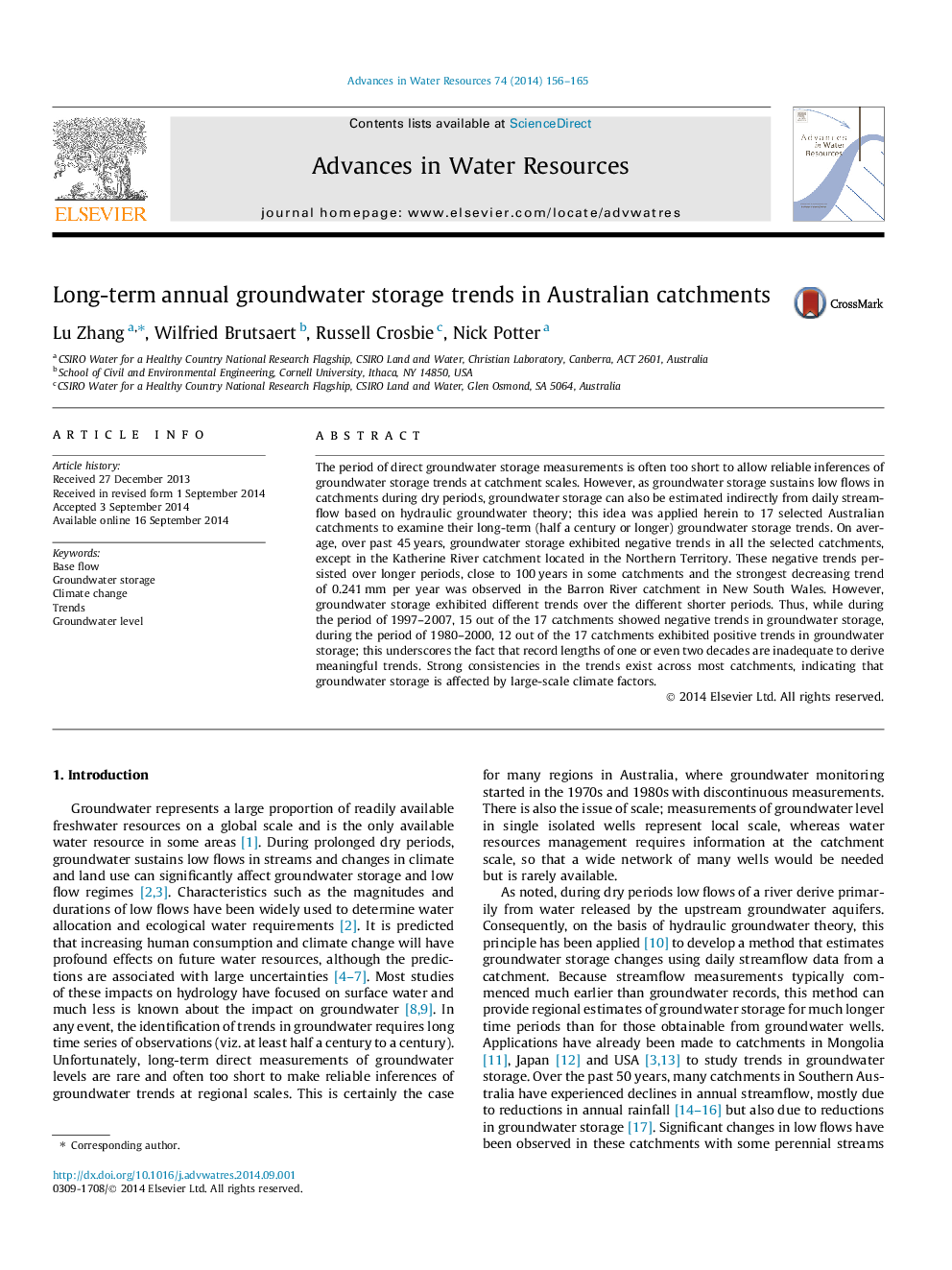| Article ID | Journal | Published Year | Pages | File Type |
|---|---|---|---|---|
| 6381049 | Advances in Water Resources | 2014 | 10 Pages |
â¢Long-term groundwater storage trends from 17 Australian catchments were estimated.â¢Groundwater storage exhibited negative trends in most of the selected catchments.â¢These negative trends persisted over longer periods, close to 100 years.
The period of direct groundwater storage measurements is often too short to allow reliable inferences of groundwater storage trends at catchment scales. However, as groundwater storage sustains low flows in catchments during dry periods, groundwater storage can also be estimated indirectly from daily streamflow based on hydraulic groundwater theory; this idea was applied herein to 17 selected Australian catchments to examine their long-term (half a century or longer) groundwater storage trends. On average, over past 45Â years, groundwater storage exhibited negative trends in all the selected catchments, except in the Katherine River catchment located in the Northern Territory. These negative trends persisted over longer periods, close to 100Â years in some catchments and the strongest decreasing trend of 0.241Â mm per year was observed in the Barron River catchment in New South Wales. However, groundwater storage exhibited different trends over the different shorter periods. Thus, while during the period of 1997-2007, 15 out of the 17 catchments showed negative trends in groundwater storage, during the period of 1980-2000, 12 out of the 17 catchments exhibited positive trends in groundwater storage; this underscores the fact that record lengths of one or even two decades are inadequate to derive meaningful trends. Strong consistencies in the trends exist across most catchments, indicating that groundwater storage is affected by large-scale climate factors.
